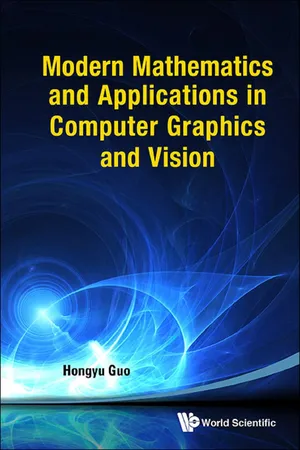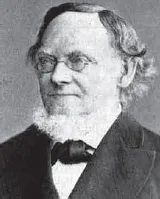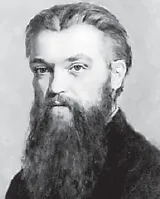
- 524 pages
- English
- ePUB (mobile friendly)
- Available on iOS & Android
Modern Mathematics and Applications in Computer Graphics and Vision
About this book
This book presents a concise exposition of modern mathematical concepts, models and methods with applications in computer graphics, vision and machine learning. The compendium is organized in four parts — Algebra, Geometry, Topology, and Applications. One of the features is a unique treatment of tensor and manifold topics to make them easier for the students. All proofs are omitted to give an emphasis on the exposition of the concepts. Effort is made to help students to build intuition and avoid parrot-like learning.
There is minimal inter-chapter dependency. Each chapter can be used as an independent crash course and the reader can start reading from any chapter — almost. This book is intended for upper level undergraduate students, graduate students and researchers in computer graphics, geometric modeling, computer vision, pattern recognition and machine learning. It can be used as a reference book, or a textbook for a selected topics course with the instructor's choice of any of the topics.
Contents:
-
- Mathematical Structures
- Algebra:
- Linear Algebra
- Tensor Algebra
- Exterior Algebra
- Geometric Algebra
- Geometry:
- Projective Geometry
- Differential Geometry
- Non-Euclidean Geometry
- Topology and More:
- General Topology
- Manifolds
- Hilbert Spaces
- Measure Spaces and Probability Spaces
- Applications:
- Color Spaces
- Perspective Analysis of Images
- Quaternions and 3-D Rotations
- Support Vector Machines and Reproducing Kernel Hilbert Spaces
- Manifold Learning in Machine Learning
Readership: Upper level undergraduate students, graduate students and researchers in computer graphics, geometric modeling, computer vision and machine learning.
Frequently asked questions
- Essential is ideal for learners and professionals who enjoy exploring a wide range of subjects. Access the Essential Library with 800,000+ trusted titles and best-sellers across business, personal growth, and the humanities. Includes unlimited reading time and Standard Read Aloud voice.
- Complete: Perfect for advanced learners and researchers needing full, unrestricted access. Unlock 1.4M+ books across hundreds of subjects, including academic and specialized titles. The Complete Plan also includes advanced features like Premium Read Aloud and Research Assistant.
Please note we cannot support devices running on iOS 13 and Android 7 or earlier. Learn more about using the app.
Information
PART I
ALGEBRA

(1805 – 1865)

(1839 – 1903)

(1858 – 1932)

(1853 – 1925)

(1809 – 1877)

(1845 – 1879)
Chapter 1
Linear Algebra
§1 Vectors
1.1 Vectors and Their Operations
Table of contents
- Cover page
- Title page
- Copyright page
- Dedication
- Preface
- Brief Contents
- Chapter Dependencies
- Contents
- Symbols and Notations
- Chapter 0. Mathematical Structures
- PART I ALGEBRA
- PART II GEOMETRY
- PART III TOPOLOGY AND MORE
- PART IV APPLICATIONS
- Bibliography
- Index